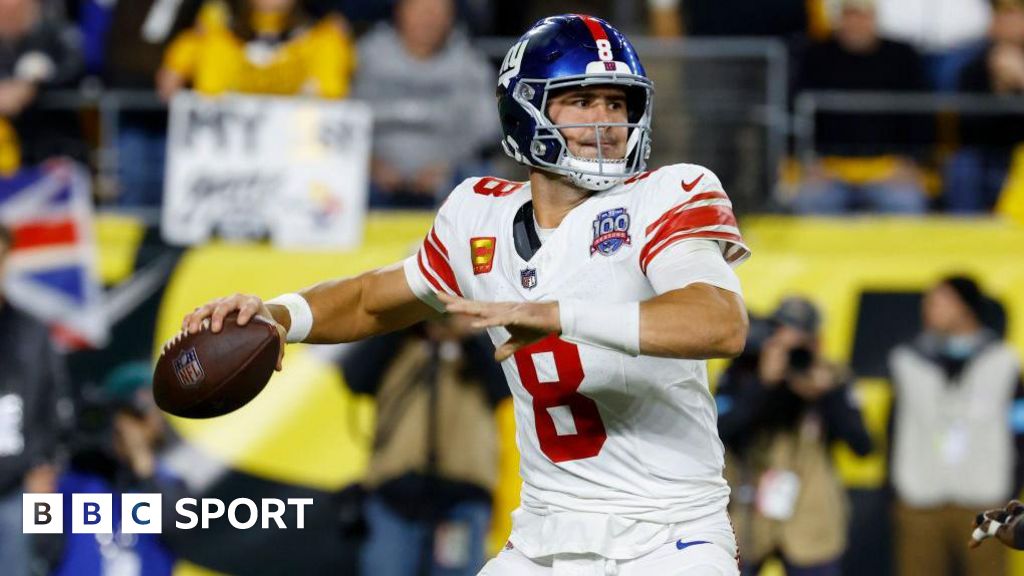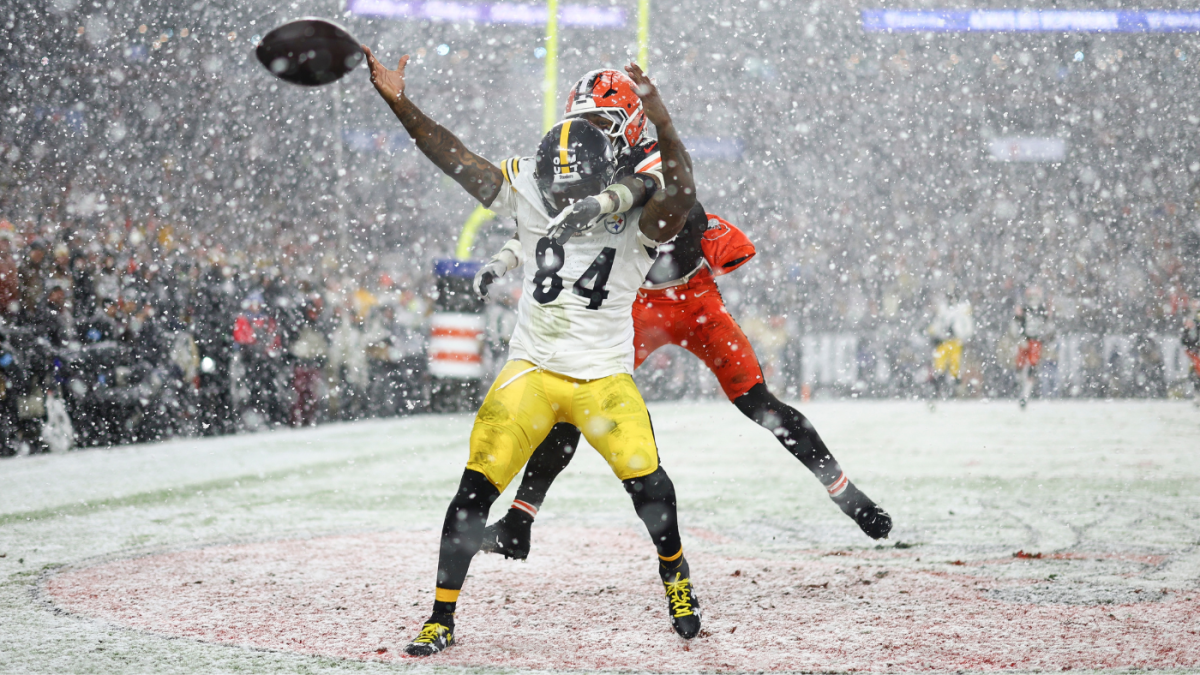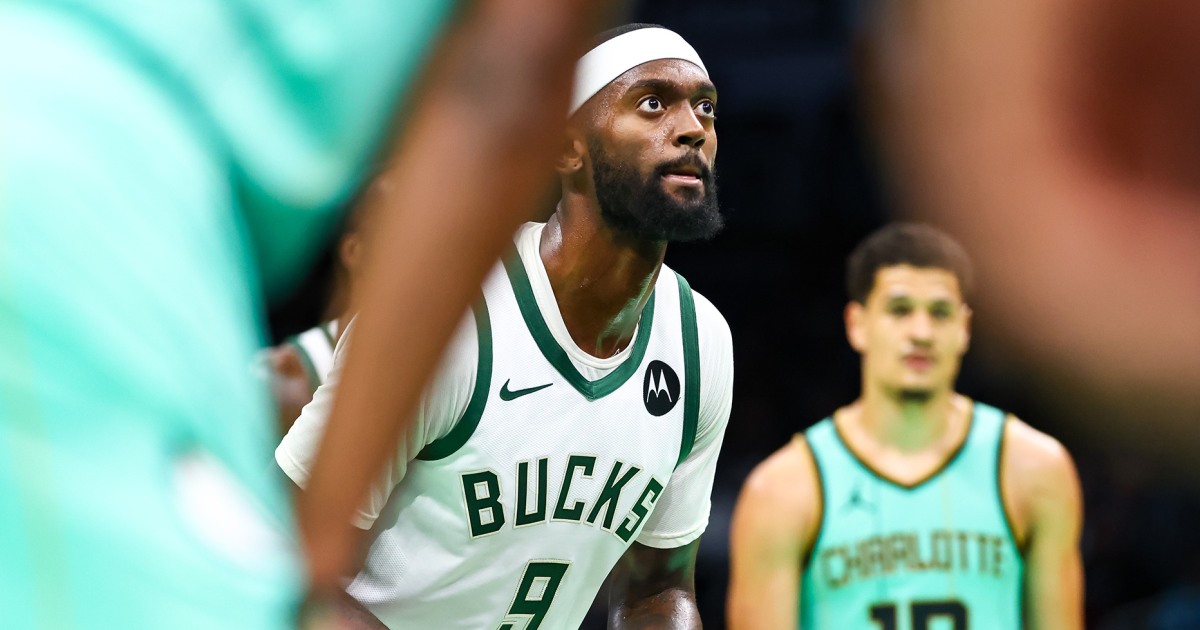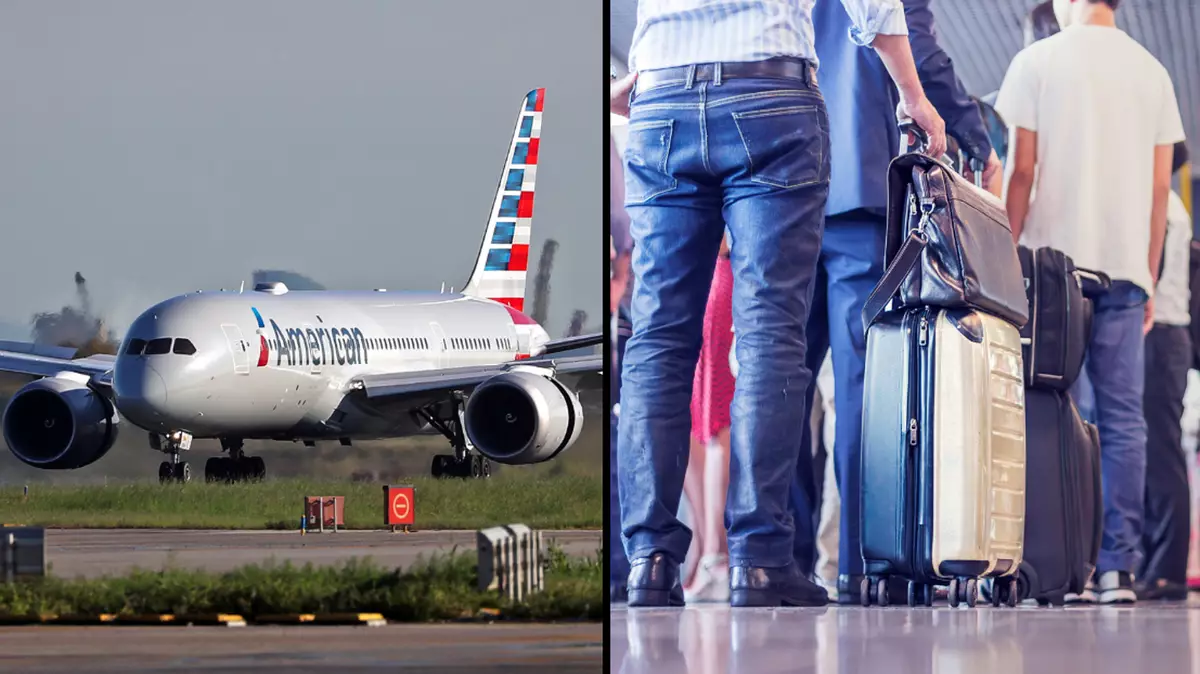Business of Football: U.S. Soccer’s three ‘big swings’, and the end of transfers as we know them?

When Olympic sprinter Noah Lyles upset a dozen or so of his Team USA colleagues last year by pointing out that winners of the NBA Championship are not world champs, he did two things: one, he made the rest of the world laugh; and two, he drew attention to the fact that many of America’s best athletes do not play much international sport.
Why would they? When your country’s three biggest team sports are (American) football, baseball and basketball, what’s the point? There are national governing bodies for each of those sports which run their international teams, but when you are that good at them, who needs a big organisation to oversee every aspect? The teams almost pick themselves, the players and coaches are borrowed from their world-leading professional leagues, and USA Football — the governing body of American football in the US — and its equivalents sort out the uniforms and plane tickets.
Soccer, on the other hand, involves a lot of cross-border competition. And to win a real world championship in that kind of football — or track and field — you probably do need a well-resourced national governing body, with its own highly qualified staff and a top-of-the-range place to work. That certainly appears to be the conclusion the United States Soccer Federation, or U.S. Soccer, came to in 2021 as it wondered how best to play the incredible hand it had been dealt in terms of opportunities to grow the sport.
Back then, U.S. Soccer knew it would be co-hosting the men’s World Cup in 2026, with a home Olympics to look forward to in Los Angeles two years later. So it decided to take back its commercial rights from Soccer United Marketing (SUM), the MLS-owned agency that had been selling them on the federation’s behalf for almost two decades.
There was still 18 months to run on the contract, so U.S. Soccer did not take full responsibility for finding sponsors and selling merchandise until the start of 2023, by which time a few more growth opportunities had been added to America’s bounty, including the Club World Cup.
Emma Hayes was a big-name hire for US Soccer (Claudio Villa/Getty Images)
So, how does U.S. Soccer feel about that decision to stand on its own two cleats?
“We are now at a moment in time for our sport unlike any other we’ve had before,” says U.S. Soccer chief commercial officer David Wright. “We just hosted Copa America, we’ve got the Club World Cup in 2025, we’ve got the men’s World Cup in 2026 — which will go down as the largest sporting event ever — and that’s followed by the LA Olympics, where both men’s and women’s soccer will be very prominent. And we’ve been public about saying we’d love to host another women’s World Cup in 2031.
“We’ve got this runway where the global spotlight is on the U.S., which is incredibly valuable for our sport. And if history is any indication, when we host global events, the impact on fandom is tremendous.
“We’ve got 122million fans of US Soccer — we’re projecting that to be well north of 150million coming out of the 2026 World Cup. Those numbers have everyone who is connected with the game very excited. And now managing our own commercial rights, which we’ve been doing for less than two years, the receptiveness we’ve received in the market place is off the charts. The business is growing exponentially.”
In the last year of the SUM deal, U.S. Soccer earned $32million (£24.1m) in commercial revenue but its projection for the current financial year, which ends on March 31, is $110million ($83m), an increase of 243 per cent in two years.
With companies such as Coca-Cola, Marriott Bonvoy, Nike and Visa already on board, three more global brands are expected to sign up as partners in the next month or so.
These deals, combined with a bigger push on maximising income from the matches played by U.S. Soccer’s 27 national teams (including USMNT, USWNT, youth teams and other teams such as futsal), will take the federation’s total revenues to comfortably north of $200million (£151m), which is a significant sum for a nonprofit organisation that spends every dollar it makes in profit on educating coaches, training referees and trying to win world championships.
It is with this in mind that it has taken three big swings recently.
The first was the decision to build the Arthur M. Blank U.S. Soccer National Training Center, a $250million (£189m) high-performance base on 200 acres near Atlanta. Blank, the co-founder of The Home Depot and the owner of MLS side Atlanta United and NFL franchise the Atlanta Falcons, wrote a cheque for $50million (£37.7m) to get US Soccer started on that, with the rest coming from a $200million bond issue that attracted $3.2billion (£2.4bn) worth of interest and was sold out in nine minutes.
Happy birthday to Arthur M. Blank, a generous partner in the growth of American soccer!
Mr. Blank is a key supporter in building the nation’s first-ever designated National Training Center in the Atlanta area. pic.twitter.com/j35uHpCjR3
— U.S. Soccer (@ussoccer) September 27, 2024
The second and third came when U.S. Soccer hired Emma Hayes and Mauricio Pochettino (pictured top) to manage its women’s and men’s teams, respectively.
“It takes resources to be able to take swings that big,” says Wright. “If the business isn’t humming, those decisions become more difficult.”
I think we file U.S. Soccer’s decision to sell its own commercial rights as a ‘good call’, then.
DJ Khaled as FIFA’s hype man?
There is, of course, another (perhaps more British?) definition of the word “humming” and it is less complimentary.
Now, this column is not saying that FIFA’s efforts to drum up interest in its revamped Club World Cup literally reek, but something appears to be putting off all those broadcasters and sponsors who were meant to fight tooth and nail to grab a piece of next summer’s 32-team extravaganza.
As of now, what FIFA has described as “the new chapter in football’s global history” has precisely no broadcast or commercial partners, unless we are including FIFA president/chief influencer Gianni Infantino’s new BFF DJ Khaled, the Miami-based hype man, record producer and meme machine.
For those confused by this reference, our advice is to stay confused. But if you must satisfy your curiosity, take a gander at Infantino’s socials.
FIFA’s problem would appear to be the event, not the venue, as it is having no trouble signing up sponsors for the men’s World Cup in 2026. Blue-chip U.S. brands Bank of America, Frito-Lay and Verizon have all signed up in the last month alone… or “another one”, as DJ Khaled might put it.
The end of the transfer world is nigh… perhaps
To be fair, FIFA has a lot on its plate at the moment, what with football’s transfer system coming to an end at 07.30 UK time on Friday.
Wait, what?!?
Sorry, yeah, there is a ruling due on October 4 from the Court of Justice for the European Union (CJEU) that might force FIFA to scrap its Regulations on the Status and Transfer of Players, seriously weakening its control over the club game, while ruining the business plans of hundreds of clubs across the globe and depriving millions of fans of something to obsess about.
I know what you’re thinking: “Surely we would have heard about something this serious before now… right?” I suspect my editors are thinking the same thing.
Well, let me explain.
Who remembers former Chelsea, Arsenal, Portsmouth and Real Madrid midfielder Lassana Diarra?
Yep, that’s him, was meant to be “the next Claude Makelele” but turned out to be the guy before Mathieu Flamini. A decent player, though, as he would later prove for France and Real Madrid.
It is what happened after he left Madrid, though, that could make him as famous as another midfielder who failed to live up to his early billing, Jean-Marc Bosman.
In 2012, Diarra swapped the Spanish capital for Dagestan’s, where he joined Anzhi Makhachkala. Owned by Russian oligarch Suleyman Kerimov, the Russian Premier League side had already bought La Liga stars Samuel Eto’o and Roberto Carlos, so it seemed like a good idea at the time.

(Anton Belitskiy/Epsilon/Getty Images)
It wasn’t, as Kerimov put the entire squad up for sale in the summer of 2013. Diarra probably should have taken this as a warning to quit Russian football but he ignored it and joined Lokomotiv Moscow on a four-year deal.
After a great start, Diarra’s form went cold after the winter break and his relationship with the club broke down. Lokomotiv asked him to accept a lower salary but Diarra refused. The club then claimed Diarra made up excuses to skip training, which they used as grounds to sack him in August 2014 and sue him for breach of contract.
In April 2015, FIFA’s Dispute Resolution Chamber ruled in favour of the club and banned Diarra from signing for a new team until he paid the Russian side €10.5million (£8.8m/$11.6m) plus interest, a penalty based on what he was worth on Lokomotiv’s balance sheet with three years left on his contract.
Diarra appealed against this ruling to the Court of Arbitration for Sport, where he would lose the argument again. In May 2016, Sport’s highest court ordered him to pay Lokomotiv €10million and gave him a backdated ban of 15 months.
By this time, he had already resumed his career with Marseille, where he would make Ligue 1’s team of the season and become club captain. But FIFA’s refusal to issue an International Transfer Certificate in 2014 meant he had missed out on an earlier proposed move to Belgian side Charleroi.
This did not strike Diarra, the French players’ union, global players’ union FIFPRO or his legal team as particularly fair, and they promptly sued FIFA and its member association in Belgium for restraint of trade and €6million in lost earnings.
If you are wondering what this sad story of broken promises and big bills has to do with your daily diet of transfer gossip, Diarra’s lawyer is Jean-Louis Dupont. He was Bosman’s lawyer, too. (It was the Bosman ruling in 1995 that prompted the start of football’s free agency era and ended UEFA’s limits on the number of overseas players teams could use.)
Back to Diarra’s case though. This hinges on a central tenet of FIFA’s transfer rules, which is that the player and any club hoping to sign them are jointly liable for compensation owed to the player’s former club when the player has terminated a contract “without just cause”.

Lassana Diarra in 2018 after signing for Paris Saint-Germain (Thananuwat Srirasant/Getty Images/ICC)
According to Team Diarra, this regulation frightens off new potential employers, as they are rightly worried they will be asked to stump up the compensation. The Belgian court, uncertain of how to interpret this claim within the framework of EU competition and employment law, asked the CJEU for some guidance.
That is what will be served up at breakfast on Friday.
And, just as a teaser, the court’s advocate general Maciej Szpunar issued his non-binding opinion on the matter in April.
“There can be little doubt as to the restrictive nature of FIFA’s regulations on the status and transfer of players,” he wrote, before adding, “the consequences of a player terminating a contract without just cause are so draconian that it is highly unlikely that a player will go down this route.
“The contested provisions are designed in such a way as to have a deterrent effect and send a chill down each player’s spine.”
The court can ignore Szpunar and, whatever the CJEU decides, the case will be sent back to the Belgian court to apply the new guidance. But, if the court agrees with Szpunar, we are… a bit lost, frankly.
In a thread on his X account this week, Antoine Duval, the head of the Dutch-based Asser International Sports Law Centre, wrote: “This is certainly less sexy than (the CJEU’s December 2023 ruling on) the European Super League but there is little doubt in my mind that it can have a much deeper and immediate impact on the whole ecosystem of football.”
It is probably best if we wait until the ruling to really explore the potential implications. But, in the meantime, have we told you about how much fun player trades are?
Everyone loves a trier… right?
It was nice of Antoine to remind this column about the European Super League as it has been at least six months since anyone has heard a meaningful peep from any of the idea’s main supporters, the likes of Real Madrid, Barcelona and A22 Sports Management, the company “formed to sponsor and assist in the creation of the new European Super League”.
That does not mean they have gone away, though. On the contrary, they have been busy meeting clubs, talking to governments, placating domestic leagues and watching various pieces if not quite fall into place, then certainly start to lean in that direction.
For example, advocates of the ESL (although they no longer want to call it that, as they know that three-letter combo has worse PR than VAR) believe the disappointing domestic broadcast deals in Germany and Italy, the disastrous one in France, the player-workload row sparked by FIFA’s Club World Cup and the potential fallout from the Diarra case have left clubs all over continental Europe mulling revolutionary thoughts.

GO DEEPER
After Rodri’s comments, should footballers go on strike over workload? – The Debate
They think those thoughts could become deeds if the new 36-team league format for UEFA’s club competitions is a bust.
It’s too early to tell, though, right?
Of course, but that has not stopped A22 and Co getting out there and planting that seed, while assuring everyone that it can provide a better format than UEFA which will not disrupt the domestic leagues while generating a lot more money.
The new format is two leagues of 16 teams, which would feature the types of teams you would expect to see in the Champions League, with a larger league of 32 teams to give the Europa League-level teams something to aim for. The leagues would be split into eight-team groups that would play each other home and away, with the top sides progressing to knockout competitions.
The idea is that these games would fit into the existing midweek slots, avoiding any conflicts with the domestic leagues, and qualification would be earned via performances in domestic football. This, the theory goes, is the only way you would ever get the English or German teams to join in.
All of this will be paid for by A22’s greatest gift to football: a direct-to-consumer streaming platform which will include a free, advertising-funded service as well as an ad-free premium service.
Or we just leave things alone for a bit.
I wonder what DJ Khaled thinks.

GO DEEPER
Explained: Everton’s proposed takeover by The Friedkin Group
(Top photo: Mauricio Pochettino by Evan Bernstein via Getty Images)
Related
Daniel Jones released: New York Giants part ways with struggling…
The New York Giants have "mutually agreed" to terminate the contract of quarterback Daniel Jones, less than two years after he signed a $160m extension with the
Browns top Steelers in snow; previewing crucial week in NFL,…
This is an article version of the CBS Sports HQ AM Newsletter, the ultimate guide to ev
NFL gameday guide: Taylor Swift’s rival, Aaron Rodgers’ despair, Kyle…
Mob movies, Motown magic, more Aaron Rodgers-centred drama, the 'Harbowl' and rushing fireworks between Kyle Shanahan and Matt LaF
Saudi wealth fund’s expansion into North American soccer raises questions
A leading human rights organization has described a sponsorship deal between Concacaf and the Saudi Arabia Public Investment Fund (PIF) as sportswashing, critic












